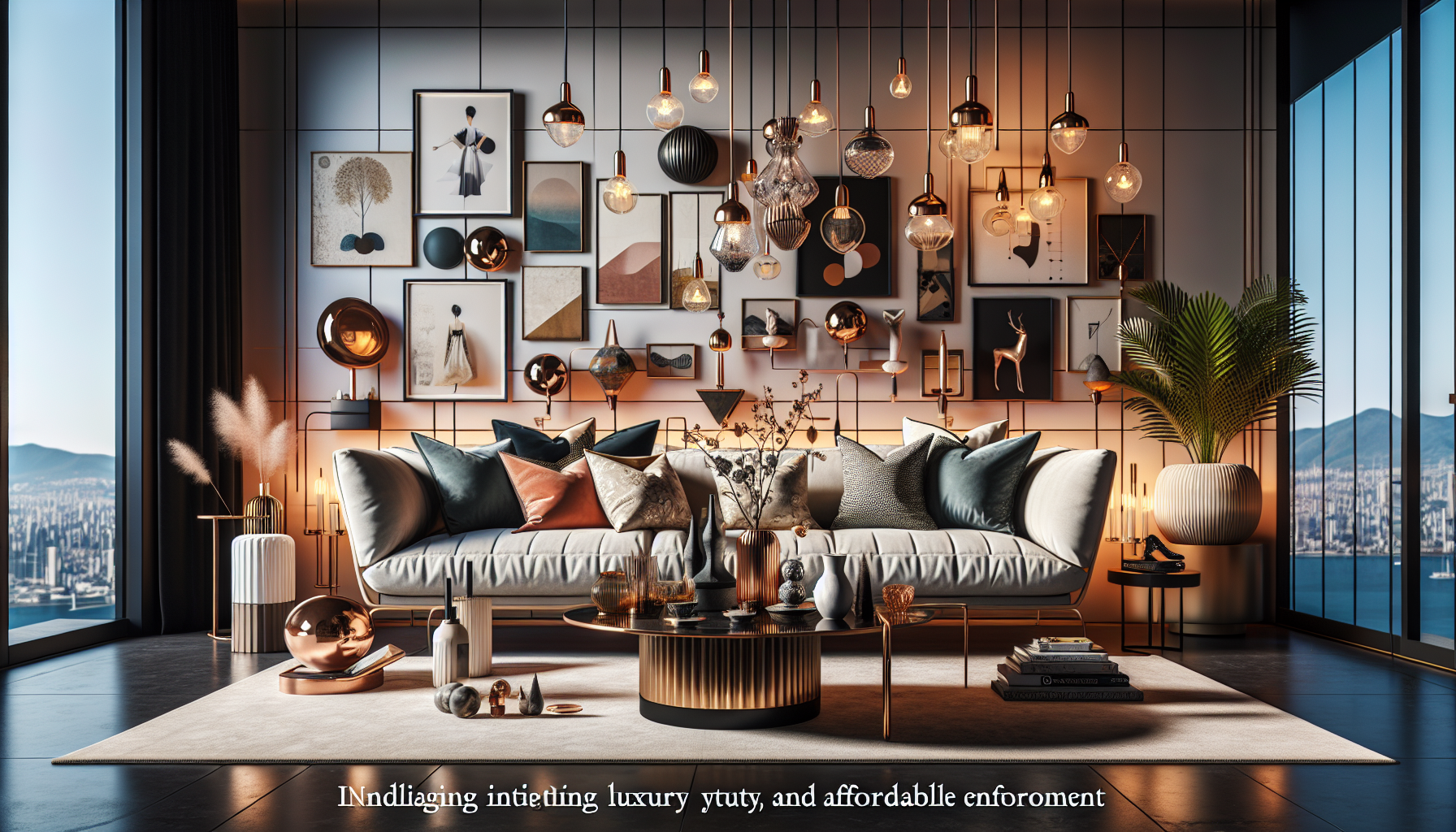Mixing and Matching Furniture for a Dynamic Look dives into the creative process of combining various furniture styles to create a space that is both aesthetically pleasing and uniquely personal. This course will guide you through understanding design principles, working with color and texture, and mastering the arrangement of your space. With a focus on eclectic styling, you’ll learn how to blend vintage charm with modern simplicity, creating a dynamic look that speaks to your individual style and transforms your home into a harmonious haven.
Lesson 1

The Fundamentals of Mixing Furniture Styles for a Dynamic Look
Creating a dynamic interior starts with mastering the mixing of furniture styles. This artful approach breathes new life into any room, inviting both visual interest and personality. Through a delicate balance of contrast and harmony, you can curate a space that reflects your unique taste while ensuring the pieces complement each other.
Discovering Your Personal Style and Room’s Purpose
Before diving into the eclectic world of furniture, identifying your personal aesthetic and the function of the space is paramount. Whether you lean towards the clean lines of modern decor or the ornate details of vintage pieces, understanding these preferences will serve as the foundation for your furniture fusion.
Comprehending Furniture Styles and Periods
With a plethora of furniture styles out there, from mid-century modern to classic Victorian, knowing the characteristics of each period can help you make informed decisions when you mix and match. Recognizing key elements from each style will allow you to create a coherent look that still offers variety and excitement.
Mixing Furniture While Maintaining Cohesiveness
- Implement a common thread: color, material, or design era
- Varying scale and proportion can add interest while staying harmonious
- Mix textures and finishes for a layered, but unified, appearance
Mixing furniture demands a thoughtful approach, balancing various styles to produce a cohesive and inviting atmosphere. With the right strategy, even the most diverse pieces can coexist harmoniously in your dynamic space.
Strategies for Seamlessly Blending Different Furniture Designs
To achieve a harmonious blend, consider integrating a consistent element. For example, a common color scheme can unify a mixture of styles. Introduce a variety of textures and finishes to add depth without disrupting the overall cohesion. The interplay of different design elements, if done right, can lead to an enrichment of the space’s character, making it both inviting and stimulating.
Creating Balance Between Styles
Striking the perfect balance is crucial when mixing furniture designs. A key technique is to distribute the visual weight of different pieces evenly throughout the room. Opt for a mix of large statement pieces and smaller, subtler items to avoid any one style overshadowing another, thus allowing your personal taste to shine in a space that’s uniquely yours.
Contrast as a Form of Art
Contrast in furniture mixing isn’t just about colors; it’s about marrying opposing styles in a way that they complement rather than clash. A contemporary table can look at home beside a plush vintage sofa if they share a common hue or texture. It’s these surprising combinations that impart your room with a sense of the dynamic and unexpected.
Harmony in Diversity
Harmony exists when different elements are brought together to form a consistent narrative. It’s not just about matching but about finding the rhythm in diversity. Coordinating disparate furniture pieces involves not just color but an understanding of scale, style, and finishing, ensuring all pieces contribute to the room’s overall mood and theme.
Through these steps, you will create a dynamic look that not only tells a cohesive story but also showcases a striking, personalized mix of furniture styles that breathe life and excitement into your home.
Lesson 2

Enhancing Visual Interest with Color and Texture in Furniture
When it comes to curating a dynamic interior, harnessing the power of color and texture in furniture selection can transform a bland room into a captivating visual story. This design technique is pivotal in mixing and matching furniture to create depth and interest. Below, we’ll unveil how to skillfully blend these elements for a stunning and cohesive look.
Exploring the Color Wheel in Furniture Selection
Color is the language of emotion in interior design. Understanding color theory is essential when you select furniture. It empowers you to create a balanced and harmonious space that speaks to your taste. Start with a base color and then layer with complementary or analogous tones to add the dynamic quality you are seeking.
Mastering Texture for In-Depth Character
Mixing textures is an art that brings a tactile dimension to your space. Combine smooth, sleek finishes with rough, woven fabrics to give your furniture setup a dynamic quality that pleases both the eye and the touch. This blend not only enhances comfort but also embeds a rich, layered narrative into your living space.
Accent Pieces as the Thread that Weaves Styles Together
Accent pieces can be magical in their ability to unite diverse furniture choices. They ensure the threads of color and texture weave throughout the space, creating a cohesive story. Statement pieces like a boldly patterned rug or a collection of plush velvet pillows can be the element that ties your mixed furniture pieces together.
Pairing Unexpected Furniture Items for a Visual Feast
- Look for furniture that shares a design feature, such as a leg style or back shape.
- Introduce a mix of organic and geometric shapes for lively contrast.
- Use lighting to highlight texture differences, creating a layered effect.
Trust your intuition when it comes to mixing and matching furniture. Begin with foundational color and texture concepts, but don’t be afraid to push boundaries for that truly dynamic look. Remember, your space is a reflection of your unique story. Let it unfold with the colors and textures that resonate with you.
Lesson 3

Mastering Spatial Dynamics for a Dynamic Furniture Arrangement
Creating a dynamic furniture arrangement involves more than just placing pieces haphazardly around a room. It requires a thoughtful consideration of spatial dynamics to ensure that the room flows well and feels cohesive. In this guide, we’ll explore how to position furniture for maximum impact and how to accessorize to complement your dynamic mix.
Artful Placement for Functional Flow
The secret to a dynamic yet functional space is the strategic placement of furniture. It’s important to consider the natural flow of a room and arrange your furniture to enhance rather than obstruct it. Think about how you move through the space and arrange pieces to create an inviting pathway that encourages exploration.
Accessorizing to Match Your Dynamic Mix
Once your furniture is in place, accessories are key to enhancing the dynamic look. Choosing rugs, throw pillows, and art can help to tie the diverse styles of furniture together. When selecting accessories, consider repeating a particular color, pattern, or texture that exists in your furniture mix to create visual harmony.
Navigating the Mix of Old and New
Combining old and new furniture pieces adds instant character to a room. When mixing these items, look for common design threads that can help to bridge the gap between styles. A color, a material finish, or even a certain line or shape can help diverse pieces look as though they were meant to be together.
Hands-On Projects: Sample Room Dynamic Layout
To put theory into practice, create a sample room layout using your mixed furniture. Consider using a design app or good old-fashioned graph paper to plan your approach. As you arrange your furniture, keep in mind the principles of balance, contrast, and accessibility. Once you’re satisfied with your layout, accessorize with intention, selecting items that enhance the dynamic feel of the space.
By following these strategies, you’ll be able to create a dynamic furniture arrangement that is as functional as it is visually compelling. Remember, your home is an extension of your personal style—let it tell your story with a dynamic and engaging spatial narrative.
Mixing and Matching Furniture for a Dynamic Look brings this course to a close by ensuring you’re well-equipped with the knowledge to transform your living spaces with confidence. Throughout the lessons, we’ve unlocked the secrets to blending disparate furniture styles, colors, and textures to achieve a look that’s both dynamic and cohesive. As you embark on your next design adventure, remember that each piece of furniture tells a story, and your home is the canvas where these stories intertwine. We encourage you to take the 10-question quiz below to test your knowledge and solidify your understanding of the vibrant world of furniture mixing and matching.
Test Your Knowledge With this short Quiz
Click here to copy your score to share on facebook!







